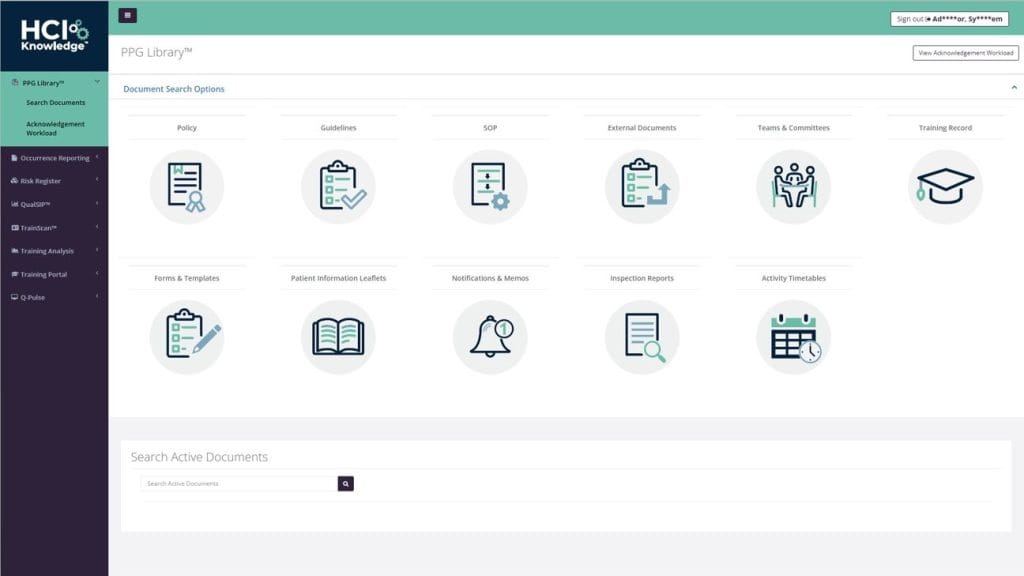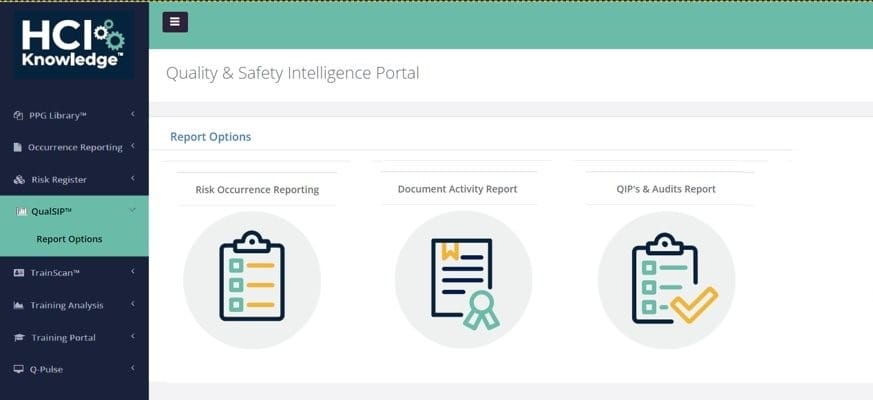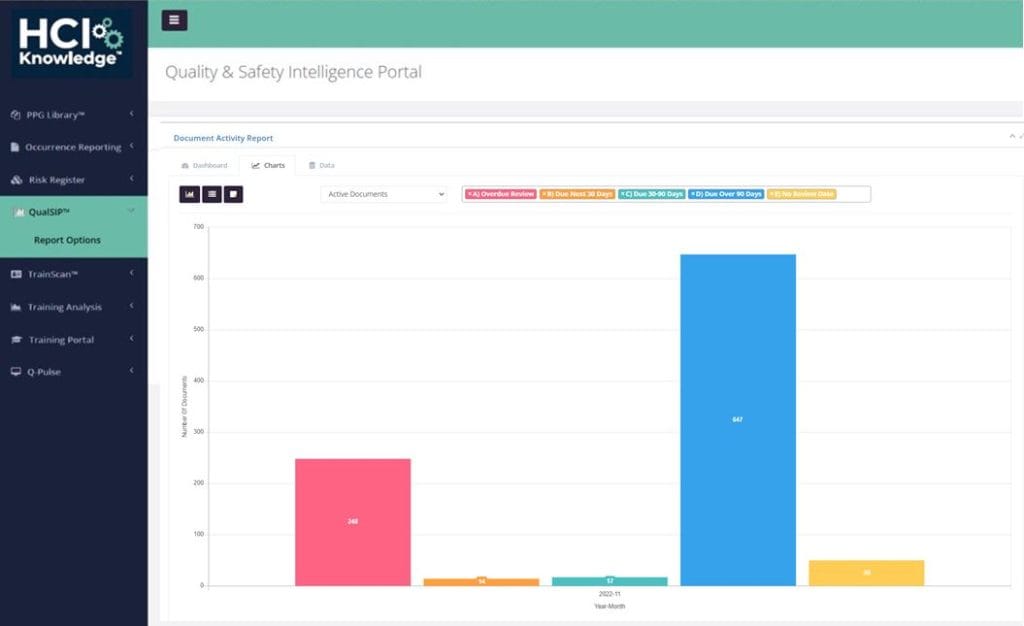Digital Transformation of your QMS – The Pathway for Community Healthcare Organisations

Introduction
Sláintecare reform aims to create a health and social care service where people can access the right services, closer to home, and based on need and not ability to pay. Part of this reform means shifting the care out of hospitals and into the community where possible. This change presents challenges and opportunities for Community Healthcare Organisations (CHOs). In this blog we examine the concept of digital health transformation and how it can support community care in achieving the goals set out in Sláintecare.
Sláintecare
The Sláintecare slogan is Right Care. Right Place. Right Time. The Right Place is shifting in accordance with the Sláintecare Implementation Strategy & Action Plan 2021 – 2023. This shift is happening from acute care into community care. Examples of some of the key aspects of the Action plan that stand out as relevant to digital health transformation are:
- Reform Programme 1: Improving Safe, Timely Access to Care, and Promoting Health & Wellbeing focusing on — integration, safety, prevention, shift of care to the right location, productivity, extra capacity and reduction of waiting lists.
- Project 1: Implement the Health Service Capacity Review (2018) including Healthy Living, Enhanced Community Care and Hospital Productivity
- Reform Programme 2: Addressing Health Inequalities focusing on — moving towards Universal Healthcare.
- Project 2: Rollout Sláintecare Healthy Communities Programme
As part of these reforms, workstreams involve:
- Building health and social care services at a community level to meet the identified health needs of local populations
- Establishing 96 new Community Healthcare Networks that will provide the foundation and organisational structures that will enable integrated care with primary and acute care partners
- Recruiting up to 7,000 community-based healthcare staff
- Building community capacity to provide services to people with a disability through both mainstream health services and specialist disability services
- The scaling of Community Intervention Teams
- Virtual wards in community settings
These are just some of the planned workstreams. On the flip side, under the same Action Plan in relation to hospital and acute care, the goal is to reduce length of stay and encourage innovations in the shift of care to the community or provide hospital avoidance measures.
In a healthcare system under pressure with increasing demands from many angles such as increasing chronic disease instance, an older population, the ongoing global pandemic and continuous cyber threats etc, AND a need to continuously recruit and retain staff; providers must ask how do we find a way to keep on top of this and deliver excellence in care, whilst remaining compliant with standards and serving the population? Digital Health is one solution to help enable the solving of these problems.
Forces Driving Digital Health Adoption?
Digital Health as defined by Australian Digital Health Agency (ADHA) is “Any application of information and communication technologies in order to improve health care and health outcomes.” We are now living in a digital society, where people expect digital solutions. Banking and transportation are good examples of industries that have been transformed by technology. We must look and see is there an opportunity for these types of solutions to make a difference in healthcare to enable healthcare providers to deliver care.
Examples of forces driving healthcare systems towards digital transformation include:
- Workforce changes: Many workers want to work from home, work from different locations or be mobile. Although not always feasible in healthcare, it is possible in certain roles so providers must adapt to enable them to recruit and retain staff. Additionally, more and more women are joining the medical workforces and remaining in healthcare throughout their lives, and this requires us to bring flexibility into roles.
- Technology trends: Artificial Intelligence (AI), Mobile Learning (ML), Mobile Technologies, Internet of Things (IOT), Analytics and Precision Medicines are all driving digital health transformation, but it is important that these solutions work around healthcare professionals to enable them to do their jobs.
- Demographics: Ireland has an aging population and people are living longer with chronic illnesses. As people want to manage those illnesses in the home, we must adapt in order to be able to care for those people. On the other end of the spectrum, we have digital natives who use technology from a young age and their expectation is that they can access services by an application. They expect to have access to their health information and be involved in decision making.
- Expectations: Healthcare providers need to demonstrate that the care provided is value for money and more importantly, value for people. We need to increase wellness. There is an expectation that wellness can remain with people as their care in the home is provided which can help prevent them from ending up in the hospital environment.
Why is Digital Health Important?
Digital Health Transformation is important because it enables:
- Connected care: As a mobile population, we need to be able to access care wherever we are. For example, if a patient has a scan in a hospital in Kerry and the consultant needs to see it in a hospital in Dublin, then this should be accessible. This is partially in place in Ireland, but it is still disjointed as GPs don’t have access to hospital records.
- Ambulatory Care: The ability to provide care in multiple locations.
- Citizen centricity: Care is following the patient and that they are at the centre of all decision making around care. To do this, we need access to the information about that person, in the right place, at the right time, in order to deliver care.
- Precision medicine: Deliver the right treatment, first time without delay. To do this, we need access to the information to determine what is the right treatment.
- Participatory health: Start to bring people into healthcare decision making and allow them to make decisions around their own care.
If it is done correctly, digital transformation can enable significant cost savings. Making small changes, that build efficiencies into the system allow us to save money in the long run. We need people in healthcare not to be burdened by the administrative requirements that are important to show compliance. Their core job is care delivery so we have to leverage digital health as an enabler to ensure we are saving money on efficiencies, but also freeing up staff to deliver care. This results in an improved experience for providers and patients and in turn improved outcomes for the patients.
Digital Transformation of your Quality Management System
In relation to Quality and Patient Safety in Community Care, how could this apply to transforming the QPS function, such that the foundation is in place to ensure the goals of Sláintecare can be met or exceeded?
Regulations and National Standards for health and social care organisations, require clear documented Policies, Procedures and Guidelines (PPGs) with evidence that staff are aware of, and are following those procedures and guidelines. It is also important that they are kept up to date with relevant best practice guidance. This can be challenging in community care to ensure that workers are engaging with PPGs.
The PPG LibraryTM is an example of a tool, developed by HCI, that enables access to policies, procedures and guidelines as well as demonstrates compliance with PPGs. Although compliance with standards can be administratively burdensome, it does help to ensure best practice is in place and helps services to meet service users’ expectations. This leads to improved patient safety, improved work environment, improved patient experience and improved efficiencies.
HCI PPG LibraryTM – Policies, Procedures and Guidelines Portal
The PPG LibraryTM enables easy access to policies and procedures and guidelines held within the Quality Management Information System (QMIS). It removes the barriers to accessing policies and procedures and improves staff interaction and utilisation of the QMIS. Staff have the ability to search for documents, view documents and acknowledge documents, without having to log into another system. The PPG LibraryTM is mobile enabled, so a mobile workforce can access policies, procedures and guidelines from wherever they are, from a mobile device or a tablet. They are grouped according to your needs to enable your staff to quickly find the PPGs they are looking for.
The image below provides an example of document search options and demonstrates how simple it is for staff to access policies and procedures.

QualSIPTM – Quality and Safety Data Analysis Portal
Within QualSIPTM, Line Managers will have access to an analysis of PPGs within the system to determine what is up to date, what is due for review, what is overdue for review and who is acknowledging documents. These graphs allow you to drill down into the documents to see what the documents are, who the author or responsible person is. With this information, you can then send a notification to the relevant person that those documents are due for review. This enables the management and compliance aspect of PPGs through the reporting tools that are built into the system, bespoke to your organisation.
Below are images of QualSIPTM dynamic graphs.


Conclusion
Digital health transformation is not really about the technology, rather the technology must enable people and so HCI work to ensure this happens. It is vital that technology supports strong processes in a way that helps the achievement of best practice.
HCI’s digital transformation experts combine experience and knowledge in regulatory and quality information systems. We use this knowledge to help you develop customised solutions that give you more time to support your patients without having to worry about the administrative burden of regulatory compliance.
We undertake process mapping from the outset to identify any process re-engineering needed. We upload policies and procedures and ensure they are fully accessible as required. We undertake full configuration of the system including staff roles aligned with automated notifications for document acknowledgement and provide staff training before go-live so that everyone hits the ground running. We believe it is very important that you don’t implement technology and then look after the fact how can it work for you. It must be bespoke to how staff do their jobs in your organisation.
For more information contact HCI at 01 629 2559 or info@hci.care.